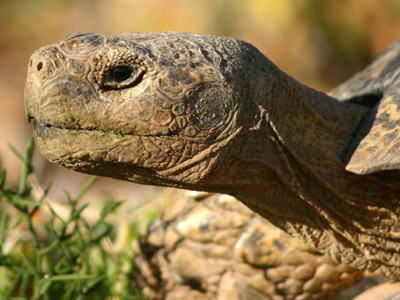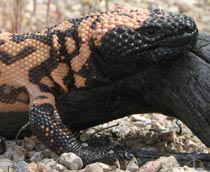

Reptiles and Amphibians - Reptiles of the World
Reptiles arose over 300,000,000 years ago, having evolved from a salamander-like ancestor. They represent a completion of the transition from life in water to a fully terrestrial lifestyle (although some reptiles have returned to the water). Waterproof skin and a water-resistant egg means that reptiles can live in places and ways that amphibians can't.
They range in size from tiny geckos that easily rest on a penny to the giant Komodo dragon. Venom is widespread among reptiles, from many lizards and snakes that will, at most, produce an irritating sensation with their salivary secretions to deadly coral snakes and their relatives which produce neurotoxins that can cause cardiac arrest. However, the vast majority of reptiles are absolutely harmless to humans.
- Order: Testudines
- Suborder: Cryptodira
- Superfamily: Testudinoidea
- Family: Testudinidae
- Tortoises generally have lifespans comparable with those of human beings.
- The oldest tortoise ever recorded, and one of the oldest individual animals ever recorded, was 188 years old!
- Giant tortoises move very slowly on dry land, at only 0.17 miles per hour (0.27 km/h).
- Order: Crocodylia
- Family: Alligatoridae
- Subfamily: Alligatorinae
- Genus: Alligator
- Native to only the United States and China.
- The majority of American alligators inhabit Florida and Louisiana, with over a million alligators in each state.
- The Chinese alligator currently is found only in the Yangtze River valley and is extremely endangered.
- Order: Squamata
- Family: Varanidae
- Genus: Varanus
- Differ greatly from other lizards, possessing a relatively high metabolic rate for reptiles.
- These kinds of lizards are very intelligent and some species can even count.
- Are eaten in parts of southern India and Malaysia, where their meat is considered an aphrodisiac.
- Superorder: Crocodylomorpha
- Order: Crocodylia
- Superfamily: Crocodyloidea
- Family: Crocodylidae
- First appeared during the Eocene epoch, about 55 million years ago.
- Are among the more biologically complex reptiles despite their prehistoric look.
- Crocodiles are very fast over short distances, even out of water.
- Order: Squamata
- Family: Helodermatidae
- Genus: Heloderma
- Species: H. suspectum
- A venomous lizard, though poses little threat to humans due to its sluggish nature.
- They inhabit scrubland, succulent desert and oak woodland.
- The drug known as exenatide is derived from this animal's saliva.
- Order: Squamata
- Suborder: Lacertilia
- Infraorder: Iguania
- Family: Chamaeleonidae
- Their eyes are the most distinctive of the reptiles.
- They can rotate and focus separately to observe two different objects simultaneously, this lets their eyes move independently from each other.
- It in effect gives them a full 360-degree arc of vision around their body.
- Order: Squamata
- Suborder: Scleroglossa
- Infraorder: Scincomorpha
- Family: Scincidae
- Most species have no pronounced neck and their legs are relatively small.
- As a family, they are cosmopolitan; species occur in a variety of habitats worldwide, apart from boreal and polar regions.
- One particular species has green blood.
- Order: Squamata
- Suborder: Iguania
- Family: Iguanidae
- Genus: Iguana
- A herbivorous lizard native to tropical areas of Central America, China and the Caribbean.
- Have excellent vision and can see shapes, shadows, colours and movement at long distances.
- Are often hard to spot, as they tend to blend into their surroundings.
- Order: Squamata
- Suborder: Scleroglossa
- Family: Gekkonidae
- Are among the most colourful lizards in the world.
- Come in various patterns and colours such as purple, pink and blue.
- The mating call sounds like a shortened bird chirping which attracts males.
- Found in warm climates throughout the world.
- Order: Testudines
- Family: Chelydridae
- Genus: Chelydra
- Species: C. serpentina
- Snapping turtles have evolved the ability to snap because they are too large to hide in their own shells when confronted.
- In some areas they are hunted very heavily for their meat, a popular ingredient in turtle soup.
Ready for more?
not all...
quizzers. Try to win a coveted spot on our Hall of Fame Page.
















